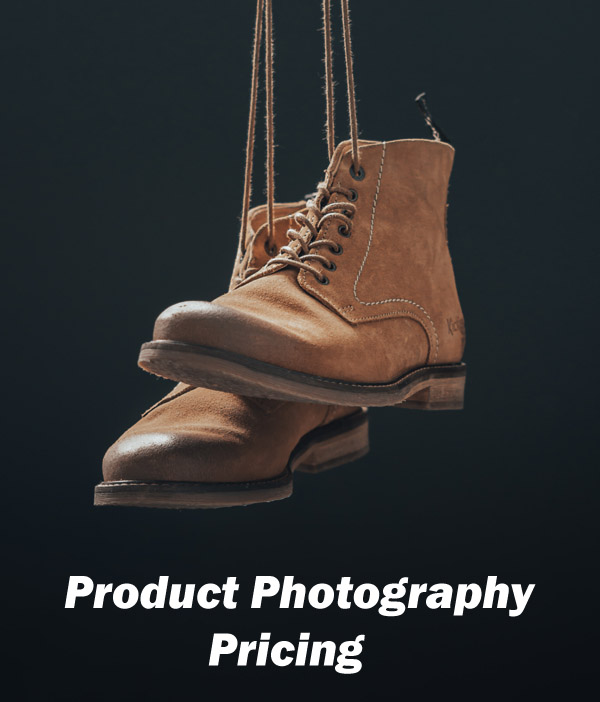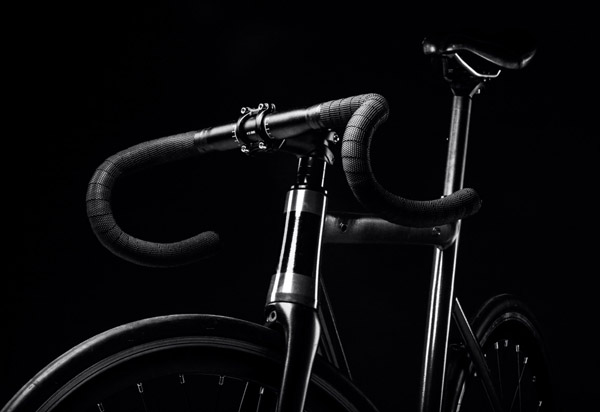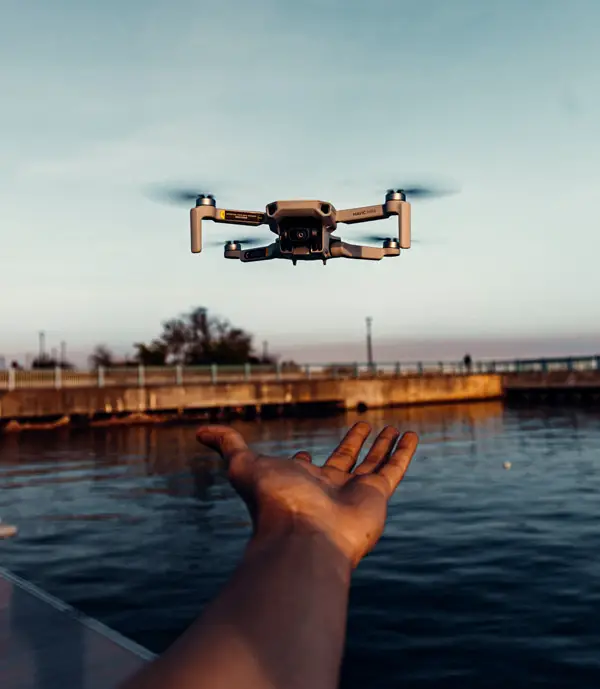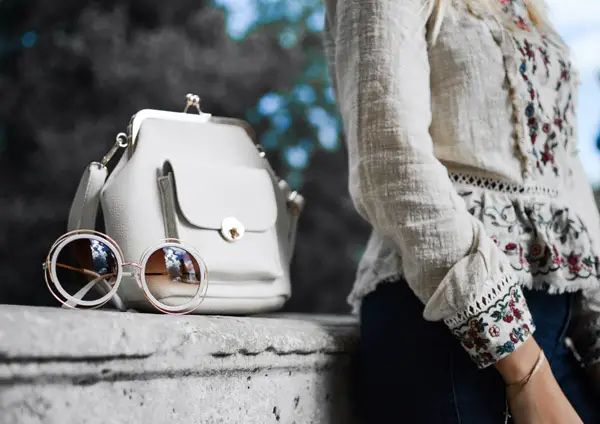Just imagine, you’ve launched a brand-new online store filled with products that you know are just perfect for your target audience. You’re excited and ready to make those sales, but there’s one piece of the puzzle missing – high-quality product images. And then it hits you: “How much is this going to cost me?”

No doubt, we all appreciate visually stunning product photos when shopping online. Have you ever considered what goes into producing those eye-catching product images? Or how their quality can dramatically impact your sales?
The truth is, professional-looking visuals can significantly influence purchasing decisions – upping conversion rates while fostering trust with customers. Yet finding an experienced product photographer within budget who also understands your vision isn’t always straightforward.
Let us help you.
Understanding Product Photography Pricing
Navigating the realm of product photography pricing can be like trekking through a jungle without a map. You’ll find rates that range from surprisingly affordable to astonishingly high-end, making it tough for businesses to get their bearings.
The cost of product photography is dependent on a variety of elements, including the size and complexity of your products, desired quality level, and photographer selection. To help clear up some confusion about these variables affecting product photography costs, let’s break them down one by one.
The Role of Visuals in Consumer Purchasing Decisions
If we think about our own purchasing habits online or offline, visuals play an undeniable role. A whopping 93% of consumers consider visuals as key when deciding whether or not to make a purchase. This means professional product photos aren’t just nice-to-have—they’re essential.
Consider this: if two similar items are presented side-by-side on an e-commerce platform—one with low-quality images taken hastily on someone’s smartphone versus another shot professionally—guess which will likely catch customers’ eyes first? High-quality imagery gives potential buyers confidence in your brand and products before they even click ‘Add To Cart’. In fact, great pictures can significantly increase conversion rates.
You might be asking yourself now: “So how much does getting these top-notch photographs actually cost?” The answer is more complex than just giving out a flat rate because several factors come into play when determining product photography pricing.
However, if your inventory includes larger or more complex items—think furniture sets that need assembly and styling—the costs can rise. This is because these products demand extra time, skill, and resources to capture in their best light.
Factors Affecting Product Photography Pricing
If you’re stepping into the world of product photography, understanding pricing can be a bit like navigating through fog. Don’t fret, we’ll make it simpler to comprehend the pricing of product photography.
The Impact of Product Size and Complexity on Pricing
Just as in real estate or event photography, size matters when it comes to product photos. The larger the item, the higher shipping costs for heavy products may add an additional charge. This is due to increased studio space needed and more lighting equipment required for professional photography sessions at full-service studios.

A complex piece also demands more from the photographer’s skills – think intricate jewelry with lots of details that need close-ups versus a simple book cover image. Therefore, expect experienced product photographers to offer rates reflecting these complexities.
An interesting fact worth mentioning here: prices range from $60 per image up to several hundred dollars depending on factors such as size and complexity.
Pricing Models Can Make All The Difference
The chosen pricing model plays another significant role in shaping overall cost-effectiveness services provided by freelance photographers or production companies alike. Some service providers prefer charging a day rate while others opt for independent photographers’ favorite – flat fees per photo taken.
Bear in mind though; beginner-friendly options might seem appealing initially but could end up costing you more if revisions are needed due to poor quality products delivered compared against those offered by professionals who understand what they’re doing right off the bat.
The Photographer’s Experience Matters Too
No one wants their purchasing decisions influenced negatively because sub-par images were used online instead of high-quality ones made possible only via professional product photography experts equipped with appropriate in-house props.
While some freelance product photographers might be able to provide a cheaper service, seasoned professionals from reputable photography studios have the knowledge and skills that ensure every shot contributes positively towards higher conversion rates. In fact, it’s worth noting that these experts often include an additional fee for their extensive experience – but this is typically money well spent when you consider the potential returns.
Different Pricing Models for Product Photography
As a business owner or marketer, understanding the pricing models for product photography can be quite complex. But don’t worry. Let’s delve into some common structures and shed light on what to expect when budgeting.
Hourly Rate Model
The first model we’ll explore is the hourly rate model. This method charges clients based on the time spent photographing their products. This could range anywhere from $100 to over $300 per hour.
This method might appear to be straightforward, yet it comes with its own set of difficulties. It requires clear communication about estimated project hours upfront as sudden changes in requirements may increase costs significantly.
Per Photo Pricing Structure
A second popular option among photographers is charging by photo produced – also known as the ‘per photo’ structure. This setup offers more predictability since you pay only for what you get: no surprises.
In contrast with hourly rates where prices fluctuate based on shooting duration, this scheme ensures transparency but remember that revisions or additional photos will cost extra.
‘Per Product’ Methodology
If your project involves multiple items within similar categories (think shoes or kitchen appliances), opting for a ‘per product’ pricing model might suit best. With this arrangement, each photographed item incurs individual charges which simplifies accounting while accommodating variations in effort required between different products.
However, bear in mind if your inventory includes varied types of merchandise such as heavy furniture alongside small accessories – standardizing price becomes challenging under this system.
In all these models remember quality shouldn’t be compromised due to cost considerations. A beautifully shot product image can make or break your marketing efforts and heavily influence purchasing decisions.
Per Day Rate
For those projects that need a full day’s worth of dedication, the ‘per day’ rate is an ideal option. This model is ideal for extensive projects requiring a whole day’s commitment from the photographer.
Pricing Comparison: Service Providers vs. Freelance Photographers
When you need professional product photography, two main options present themselves – service providers or freelance photographers. Which option is the more economical decision? Let’s dissect this question.
The Costs of Hiring a Service Provider
Hiring a service provider for your product photography can often mean higher costs upfront, but these services usually come with additional perks that freelancers may not offer. For instance, full-service studios typically provide in-house props and equipment, reducing your expenses on those fronts.
Hiring an e-commerce photography agency for high-volume businesses can set you back by upwards of $600 per image. The reason behind such hefty price tags lies in their comprehensive offerings including editing and retouching services as well as access to top-notch gear.
Freelance Photographers: A Cost-Effective Alternative?
If budget constraints are biting hard at your heels, turning towards freelance photographers might be a viable option. Independent professionals often charge less than larger agencies because they have fewer overheads to cover.
In contrast to service providers’ rates hovering around $600 per photo mentioned earlier(source), some talented freelance photographers might only ask for about half that amount depending on the project’s complexity and requirements. However, bear in mind hidden charges like travel fees or costs associated with sourcing specific props could add up quickly when working with freelancers.
Making an Informed Decision
Your decision between opting for a service provider versus going solo should be based on a blend of factors. You need to weigh the pros and cons carefully, considering not just cost but also your specific needs and circumstances.
Service providers might ask for a bigger initial investment, but they often give you an all-in-one package deal. This includes everything from the actual shoot to post-production editing. On the flip side, freelance photographers could save you some money at first but, it really depends on their terms and conditions. You could find yourself shelling out more cash if extra services are required.
Pricing Considerations for Different Types of Product Photography
Understanding product photography pricing isn’t as simple as looking at a single number. The type of product photography you need, such as lifestyle images or white background photos, can significantly influence the price.

For instance, lifestyle photography, which often features products in real-life settings and includes models or props to convey a story, typically costs more than standard white background photos. This is because lifestyle shoots require additional resources like location scouting, model hiring, and post-production editing. It’s no surprise that this level of detail could make it the pricier option, but remember that these images are particularly effective on social media platforms where they blend seamlessly with user-generated content.
Lifestyle Images vs White Background Photos: A Cost Comparison
If we consider two extremes – basic white background shots and high-end commercial lifestyle imagery – prices may vary drastically depending on factors such as studio hire costs and image use rights amongst others.
The average cost for straightforward white-background photos ranges between $20-$50 per photo if taken by an experienced photographer. These kinds of photographs serve their purpose well across various online selling platforms since they focus purely on showcasing the product without any distractions. But let’s not forget about retouching. Every click needs some love from Photoshop before being customer-ready, adding onto your final bill too.
Moving over to commercial-grade lifestyle images; here we’re talking about complex setups involving professional lighting arrangements alongside styling elements – everything tailored perfectly towards capturing those sell-inducing snapshots. With all these additional components involved plus licensing fees based on how widely you intend to distribute these pictures (e.g., globally through advertisements), don’t be surprised when quotes run into thousands per shot.
Navigating the Price Spectrum
Between these two extremes, there’s a whole spectrum of product photography options. You can find more cost-effective services that blend aspects of both types to create engaging images without breaking the bank. Finding what works best for your brand and budget is the real trick.
From DIY to Big Budget
Understanding product photography costs can feel like navigating a labyrinth. Let’s shine some light on this path, starting from the basics of doing it yourself (DIY) up to hiring seasoned pros with big budgets.
DIY Product Photography: A Cost-Effective Option?
Handling the task oneself could appear to be a financially savvy alternative at first look. You’ll need a decent camera, some basic lighting equipment and perhaps props or backdrops relevant to your products. However, consider time as well; learning techniques for quality photos doesn’t happen overnight.
If you’re working with small items that are easy to photograph, such as jewelry or books, DIY might be feasible. But larger or complex products could prove challenging without professional help. Costs can range from $60 and up per image if you go pro.
Hiring Experienced Product Photographers: Worth The Investment?
You’ve heard the saying “you get what you pay for”, right? That rings true in product photography too. Sure, hourly rates range from $100-$300+, but think about quick turnaround times and guaranteed quality these experts bring along.
Beyond their technical skills, experienced photographers understand how visuals impact purchasing decisions—a critical factor considering over 90% of consumers rely heavily on visuals when buying online.
Navigating Between Service Providers And Freelance Photographers
Moving further up the budget ladder leads us towards service providers—full-service studios specializing in e-commerce imagery—or freelance photographers who offer more personalized services.
Yelp has reviews for numerous service providers and freelance photographers, but remember to check their portfolios before making a decision. A single image could cost upwards of $600 depending on the complexity of your product and the expertise required.
Negotiating Pricing with Product Photographers
Striking a balance between quality and cost is the crux of successful negotiation, especially when it comes to product photography. With careful planning and understanding of key factors, you can secure an agreeable rate without compromising on image excellence.
Know Your Needs and Communicate Clearly
The first step in negotiating pricing starts by knowing exactly what you need from your photographer. Be upfront about these requirements – whether they involve specific angles, lighting conditions or even post-production editing. Clear communication prevents misunderstandings that could lead to additional charges later on.

Budget Constraints vs Quality Assurance
A common pitfall while bargaining for lower prices is overlooking the value professional photographers bring to the table. Yes, costs matter but so does quality. It’s important not just to look at price tags but also at portfolios before making purchasing decisions.
You might be tempted towards less experienced or beginner photographers due to their seemingly attractive rates; however, remember – low-cost services may not always offer high-quality results. Seasoned professionals have honed their craft over time resulting in superior work compared with novices.
Understanding Market Rates: Day Rate vs Per Image Charge
In order to negotiate effectively with potential service providers, having a grasp of market trends is crucial too. This includes understanding different pricing models such as day rates versus per-image fees.
Independent photographers often charge by the hour which can range anywhere from $100-$300+, whereas full-service studios or production companies may charge per product image, starting from $60 and going up to several hundred dollars.
Consider Long-Term Relationships
Not just a one-time thing, negotiation can lead to long-term deals. Happy with your photographer’s work? Why not think about locking in for the long haul? You could score some real savings – lots of photographers give better rates for longer commitments.
Is Product Photography Profitable?
If you’re a photographer, it’s not unusual to question if product photography is profitable. With various pricing models for this service, such as per photo, per hour/per day, and per product, the potential profitability can vary.
The business model behind product photography often depends on several factors. These include your skills as a professional photographer and the specific demands of the clients who need these services. But let’s get real; what truly matters here are numbers – profits over expenses.
To give you an idea of how much photographers charge for their work in this field: an hourly rate can range from $100 up to more than $300 depending on your level of expertise and reputation in the industry.
Pricing Models and Profitability
A key factor that influences earnings in product photography is choosing the right pricing model based on both market rates and your operational costs. This could be anything from studio rent (if applicable), equipment maintenance costs or even additional charges like transportation fees when shooting outside your usual location.
In addition to these hard costs associated with running a professional operation – think independent photographers versus full-service studios – there’s also considerable time investment involved with pre-production meetings, setting up shots meticulously by adjusting lighting conditions or arranging props just so.
The Creative Process for Product Photography
Let’s peek into the captivating world of product photography. This is where art meets business, and creative minds work tirelessly to produce stunning images that do more than just catch the eye – they sell products.
First things first, a product photographer must have an understanding of the client’s vision. Are we talking about crisp white background shots suitable for e-commerce? Or perhaps lifestyle images showcasing products in action? Each scenario calls for different strategies and techniques.
Idea Generation and Conceptualization
The initial stage involves brainstorming ideas based on your brief or inspiration from other sources. It’s essential at this point to consider how you can differentiate yourself from competitors while still aligning with brand guidelines.
Next comes conceptualization – translating those ideas into tangible concepts ready to be photographed. Sketches are often created during this phase as visual references.
Crafting The Set-up And Lighting Conditions
This step includes arranging props, adjusting lighting conditions, setting up backgrounds etc., all meticulously crafted according to our concept sketch from earlier. While natural light is preferred by many photographers because it produces soft shadows and evenly distributed light, studio lights offer more control over directionality and intensity. So remember: every single element matters when crafting perfect pictures.

Picking The Perfect Lens And Camera Settings
You might think all lenses were made equal but each one offers unique qualities that can enhance or alter your image drastically. For example, wide-angle lenses allow us to capture more within the frame while macro lenses let us zoom right onto minute details enhancing their significance. Your camera settings also play a vital role in determining how your product photo will look. The ISO, aperture and shutter speed all require adjusting depending on the lighting conditions and effect desired.
Post-Production Editing
Lastly, post-production is where the real magic unfolds. Photographers use tools like Adobe Photoshop or Lightroom to adjust exposure levels, fix blemishes, and add filters – just about anything. When editing though, remember: less can often be more.
FAQs
How much should I charge for product photos?
Your charges for product photos hinge on your expertise, time invested, and the complexity of shots. But always value your work fairly.
How much does product photography cost?
The costs fluctuate based on numerous factors. However, you might expect to pay between $60 to several hundred dollars per image.
How do you structure photography pricing?
Pricing structures differ – some photographers charge per photo while others use hourly rates. Choose a model that aligns with your workload and clientele.
How do you calculate how much I should charge for photography?
To figure out what to charge, factor in overhead expenses like equipment and studio space plus labor costs. Then add a reasonable profit margin above these expenditures.
Conclusion
So, you’ve dived into the world of product photography. It’s a journey full of exciting challenges and rewards.
Remember that visuals are crucial in consumer decision-making, and investing in high-quality images is essential for boosting conversion rates.
You now know the factors affecting product photography pricing – from service types to additional costs like editing and reshoots. And let’s not forget about different pricing models – per photo or hourly rates.
You’ve also explored various service providers vs freelance photographers’ pros and cons while understanding how social media influences product photos prices.
Your takeaway? The importance of budgeting for frequent content refreshes without compromising quality. You’re aware of potential hidden charges too!
This guide has been your roadmap through the maze that is product photography pricing. Now it’s time to put this knowledge into action. Click the following link to learn how to do product photography.








